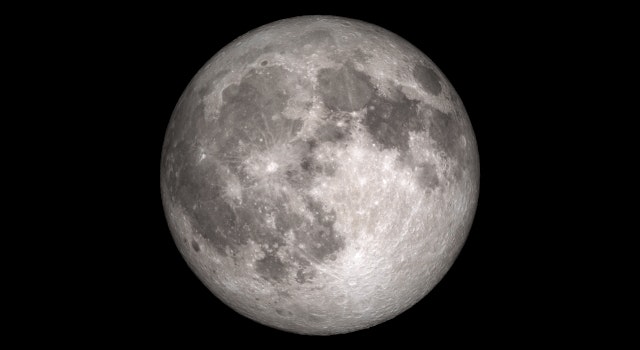Total lunar eclipse to occur Sunday during moon’s closest orbit to Earth
By Ike Fredregill, Cowboy State Daily (Image credit: NASA)
When the moon hits your eye like a big cherry pie, that’s a Super Blood Wolf Moon, aka total lunar eclipse, and it’s happening Sunday night.
“A lunar eclipse is when the moon passes into the Earth’s shadow,” said University of Wyoming Professor of Physics and Astronomy Chip Kobulnicky. “It typically happens about twice per year.”
While Super Blood Wolf Moon may sound like the name of an ’80s hair-metal band, Kobulnicky said the nomenclature refers to the moon’s proximity to the Earth, and the atmosphere’s tendency to filter blue light.
“The moon’s orbit is ever so slightly elliptical,” he explained. “It looks pretty circular, but it has a small eccentricity, and that means during part of its orbit, it’s closer to the Earth.”
When its orbit draws the moon closest to the Earth, it is referred to as a Super Moon.
“The lunar eclipse has to happen on a full moon, because that is the time of month that the full disc of the moon is lit by the sun, so the moon is on the opposite side of the Earth as the sun,” Kobulnicky said. “As the moon moves completely into the Earth’s shadow, the moon will still be visible, because a small amount of sunlight gets through the Earth’s atmosphere.”
The atmosphere preferentially blocks and scatters blue light, giving the sky its blue appearance.
“It’s mainly the red light that gets through the Earth’s atmosphere,” Kobulnicky said, explaining the filtering process also grants sunsets a red appearance. “So, that’s why the moon will look red, and why I think they call it a Blood Moon.”
The first full moon of January is referred to as a Wolf Moon, likely because of the packs of wolves that gathered and howled outside Native American settlements during this time of year, the Farmers’ Almanac reported. It has also been dubbed the Old Moon or the Moon After Yule.
Unlike the limited visibility of 2017’s total solar eclipse, the Super Blood Wolf Moon will be seen from most places throughout North and South America — weather permitting — Kobulnicky said.
“They are usually visible from a wide swath across the Earth’s surface,” he added. “It’s a fairly long event, so I’m hoping we have clear enough skies for people to see the Super Blood Moon.”
As is often the Wyoming way, however, the event might be disguised by a storm front rolling in Sunday night, said National Weather Service Meteorologist Matthew Brothers.
“Right now, it looks like there will probably be some clouds in the sky Sunday night,” Brothers said. “We have a potential storm system moving in early Monday. We’re looking at cloud cover of about 50 percent for most of the state.”
The north and west portions of Wyoming are likely to see the most cloud cover, while southeastern Wyoming — mainly Laramie County — could experience less cloudy skies, he said.
Cloudy or clear, NASA reported the lunar eclipse will begin at 7:36 p.m. Mountain time Sunday with the edge of the Moon entering the Earth’s outer shadow, or penumbra. At 8:33 p.m., the Moon will enter the Earth’s inner shadow, or umbra, and begin darkening significantly, NASA reported.
By 9:41 p.m., the Moon will be completely enveloped by the umbra, kicking off the total lunar eclipse. The Moon exits the umbra at 10:43 p.m., ending the total lunar eclipse. And, the event will end entirely with the moon leaving the penumbra at 12:48 a.m. Monday, according to NASA.

A telescope is not needed to see the lunar eclipse, Kobulnicky said, but observers might use binoculars to get a closer look.
“The moon is so bright and so big, that a telescope is overkill,” he explained. “Just the eyes is a perfect tool.”
While the moon’s proximity to the Earth could mean bigger tides on the coast, Kobulnicky said the Super Moon would not affect the state in any discernible way.
“I don’t think there’s many tide affects going on in Wyoming,” Kobulnicky said, smiling. “There’s just not enough beachfront property here.”





